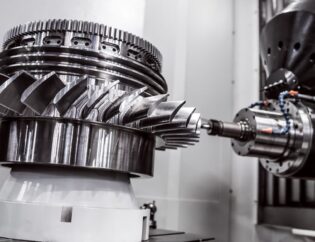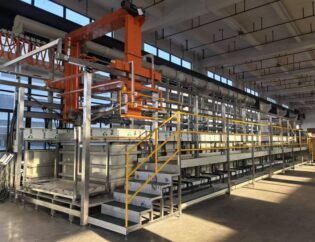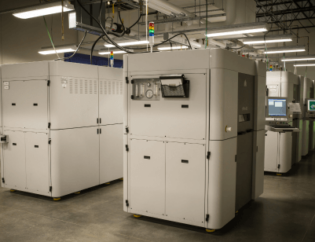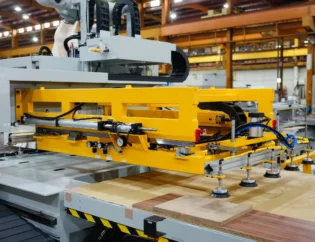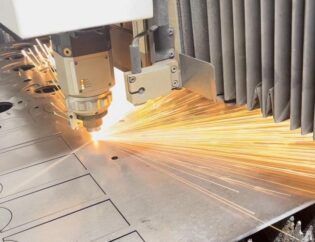In the world of precision machining, the slant bed lathe stands out as a vital tool for enhancing productivity and accuracy. This innovative design allows for improved chip removal and better access to the workpiece, making it a preferred choice for many manufacturers. Understanding its mechanics and applications is essential for anyone involved in machining.
This guide will delve into the intricacies of slant bed lathes, covering their design features, operational advantages, and maintenance best practices. Readers will gain insights into how these machines can optimize workflows and improve overall efficiency in production environments.
Additionally, we will explore various applications of slant bed lathes across different industries, highlighting their versatility and effectiveness. By the end of this guide, readers will be equipped with the knowledge to make informed decisions about integrating slant bed lathes into their operations.
What is Slant Bed Lathe – Difference Between Flat Bed CNC Lathe and Slant Bed CNC Lathe
CNC lathes can be divided into horizontal and vertical machines, horizontal CNC lathe has flat bed and slant bed type, their main difference lies in the elevation angle of the lathe. In this article, let’s learn about the difference between flat bed CNC lathe and slant bed CNC lathe and help you to decide which to choose for different production plans.
Comprehensive Insights into Slant Bed Lathes
Slant bed lathes are designed with a bed that is inclined at an angle, which enhances chip removal and allows for better gravity-assisted cooling. This design is particularly beneficial for high-speed machining and complex part production. The slant bed configuration also provides a more rigid structure, which contributes to improved accuracy and reduced vibration during operation.
Technical Features of Slant Bed Lathes
The following table summarizes the key technical features of slant bed lathes compared to flat bed lathes:
| Feature | Slant Bed Lathe | Flat Bed Lathe |
|---|---|---|
| Bed Angle | Typically 30° to 75° | Horizontal (0°) |
| Chip Removal | Enhanced by gravity | Less efficient, chips may accumulate |
| Stability | High rigidity due to angled design | Good stability, but less than slant bed |
| Tool Change Capability | Limited due to turret design | Easier for large parts |
| Vibration | Reduced due to cutting force alignment | Higher potential for vibration |
| Ideal for | Medium-sized components | Heavy-duty and complex geometries |
| Automation | More advanced automation options | Limited automation capabilities |
Differences in Types of CNC Lathes
CNC lathes can be categorized into various types based on their design and functionality. The following table outlines the differences between slant bed lathes and other types:
| Type | Description | Best Use Cases |
|---|---|---|
| Slant Bed Lathe | Bed inclined for better chip flow | Medium-sized components, high-speed machining |
| Flat Bed Lathe | Horizontal bed for stability | Heavy-duty machining, complex geometries |
| Vertical Lathe | Vertical orientation for large parts | Large workpieces, heavy materials |
| Multi-tasking Lathe | Combines turning and milling capabilities | Complex parts requiring multiple operations |
| Swiss Lathe | High precision, small parts | Precision machining of small components |
Advantages of Slant Bed Lathes
Slant bed lathes offer several advantages over traditional flat bed lathes. The inclined design allows for better chip evacuation, which reduces downtime for cleaning and maintenance. Additionally, the rigidity of the slant bed enhances machining accuracy, making it ideal for high-precision applications. The ability to automate processes further increases productivity, making slant bed lathes a preferred choice in modern manufacturing environments.
Applications of Slant Bed Lathes
Slant bed lathes are widely used in various industries, including aerospace, automotive, and medical technology. Their ability to handle medium-sized components with complex geometries makes them suitable for producing parts such as aircraft components, automotive parts, and medical devices. Companies like www.cnclathing.com and tormach.com provide a range of slant bed lathes tailored for these applications.
Conclusion
In conclusion, slant bed lathes represent a significant advancement in CNC machining technology. Their unique design offers numerous benefits, including improved chip removal, enhanced stability, and greater automation capabilities. When choosing between slant bed and flat bed lathes, it is essential to consider the specific requirements of your production processes. Whether you are working with heavy-duty materials or intricate components, understanding the differences and advantages of each type will help you make an informed decision.
FAQs
1. What is the primary advantage of a slant bed lathe?
The primary advantage of a slant bed lathe is its inclined design, which enhances chip removal and reduces vibration, leading to improved machining accuracy.
2. Can slant bed lathes handle large parts?
While slant bed lathes are ideal for medium-sized components, they may not be as effective for very large parts compared to flat bed lathes.
3. Are slant bed lathes more expensive than flat bed lathes?
Generally, slant bed lathes can be more expensive due to their advanced features and capabilities, but the investment can lead to higher productivity and efficiency.
4. What industries commonly use slant bed lathes?
Slant bed lathes are commonly used in industries such as aerospace, automotive, and medical technology for their precision and efficiency in machining.
5. Where can I find slant bed lathes for purchase?
You can find slant bed lathes for purchase at various manufacturers and suppliers, including www.cnclathing.com, tormach.com, kaast-usa.com, www.knuth.com, and kentcnc.com.





